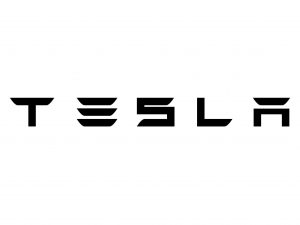BRANDS WE INSTALL. CALL OUR FRIENDLY EXPERTS NOW ON 03 8804 5776




Free
EV charger quote
For customers with existing PV systems
Our highly trained team can provide you with professional advise so that you can choose the right EV charger to connect with your system.
What is an EV Charger?
An EV Charger is a unit that provides an electrical charge to the car’s battery. It pulls electric current from the grid and delivers it to the electric vehicle through a connector or plug. An electric vehicle stores that electricity in a large battery pack to power its electric motor.

EV Chargers explained
Charging an electric vehicle sounds simple in theory, right?
Park up, plug in and recharge your battery. Job done. The reality is a little bit different, as anyone who owns or has driven an EV will doubtless agree. It’s certainly not quite as straightforward as pulling into a Petrol station and filling up, which can all happen within the space of a few minutes.
This is because electric vehicle charging is still evolving. Our petrol and diesel refuelling infrastructure has been around for years and much of the basic setup hasn’t changed all that much. Pumps are slightly more advanced than they used to be and paying for your petrol is certainly more straightforward. Then again it’s possible to recharge an EV for free, despite some recent opposition to that concept.
EV Chargers are not all equal
Part of this is down to the different ways in which electric vehicles get charged. Depending on the model of car you’ve got, the port used to plug in and recharge varies. It’s a bit like the different plug sockets you get around the globe.
Thankfully, anyone heading off on vacation simply needs to pack a multi-headed travel plug, which allows them to plug in and charge their phone, shaver or hairdryer using a plug that suits the socket. Unfortunately, it’s not possible to do this with an electric vehicle.
Tesla has done a great job in developing its own proprietary system, which lets you quickly and easily access the arguably superior Supercharger network. These Superchargers can be found across the US, Europe and many other parts of the world, with over 30,000 individual chargers and counting.
The rapidly expanding network is also supplemented by Tesla’s Destination Chargers, found in hotel parking lots and other popular tourist locations. These are slow, but use the same plug and socket mechanism as the rapid-power Superchargers.
Which EV Chargers are the best
It’s not so much which charger is best, as much as what will be compatible with your EV. The best thing about charging connectors and their respective ports is that they only fit if they’re compatible with each other.
If you’re new to charging, or just in a state of minor panic due to a battery that’s nearly empty, it can be easy to overlook this point. However, a deep breath and quick examination of the connector head and port is all that’s needed to check one will mate happily with the other.
Assuming you’ve got that figured out, the next thing is the speed factor. Chargers are, generally speaking, getting faster and more efficient.
Levels
You also get different levels of charging: Level 1, Level 2 and Level 3. The higher the number, the more powerful (and faster) the charging should be.
Which one you can use depends on the type of EV you want to charge and its ability to accept the power supply. The good news on that front is the car will be able to figure this out for you, so you won’t inadvertently fry your battery when you plug in.
Level 1
Level 1, is the ‘entry-level’ option, and much slower as a result. The bonus is if you don’t mind adding a miserly 15 km of range per hour is that it allows you to plug in and charge at home without having to install any specialist charging equipment. Overnight makes the most sense and lets you avoid the public charger scenario altogether.
Level 2
Level 2, is speedier and your options are greater, although there are still limitations. You might get up to 150 km from an hour’s charge, though this could drop down to just over 10 in other cases. EV chargers that offer Level 2 charging are becoming more commonplace, however, and can often be the ones to look for at locations like fast food outlets, shopping mall complexes and hotels.
Level 3
Level 3 DC rapid charging is the most appealing in terms of speed and efficiency. DC rapid charge and Supercharging options can deliver up to 30-40 km per minute thanks to that direct current supply and higher voltage rating. Tesla owners get to enjoy this via the Supercharger network, while other makes and models don’t always get that luxury.
If you don’t have a Tesla but want to be up there with the big boys, then Level 3 charging is the one to head for — provided it’s available where you are, or where you’re headed.
Different chargers have different plugs
In terms of the plugging-in part of the charging process, the connectors are standardized for both Level 1 and Level 2 charging using a so-called ‘J-Plug’. This plug is also known as Type 1, with type 2 chargers being used in Europe and other parts of the world.
Level 3 comes with a trio of standardized connection options. While Tesla has its own proprietary thing going on, the majority of other auto manufacturers currently use the Combined Charging System, or CCS, which is a combination-style plug. The CCS charging standard shares the same J Plug as Level 1 and Level 2 chargers, but also includes two additional DC pins at the base to support higher electrical current.
